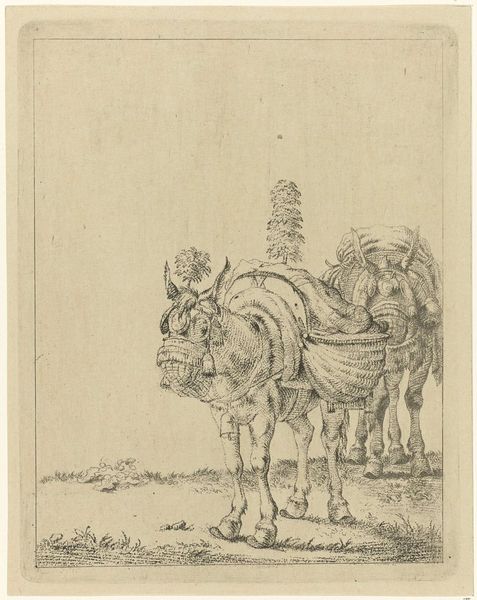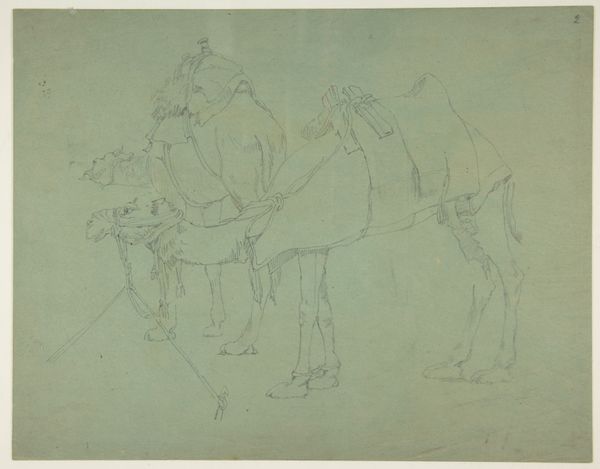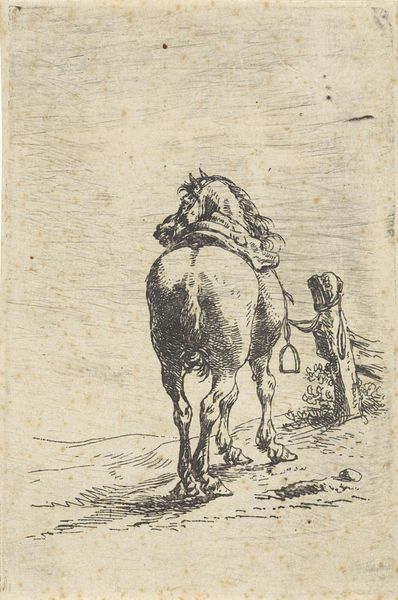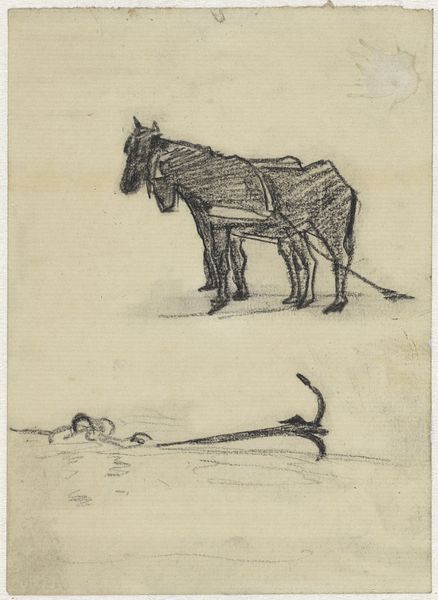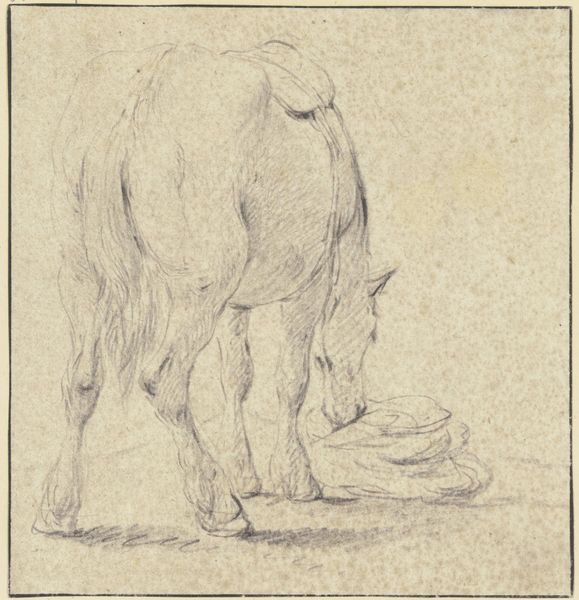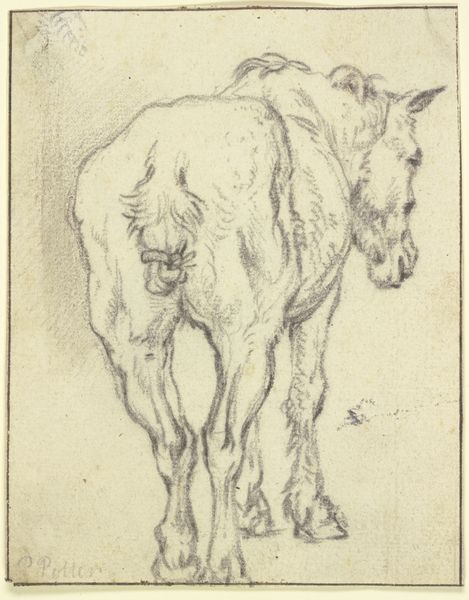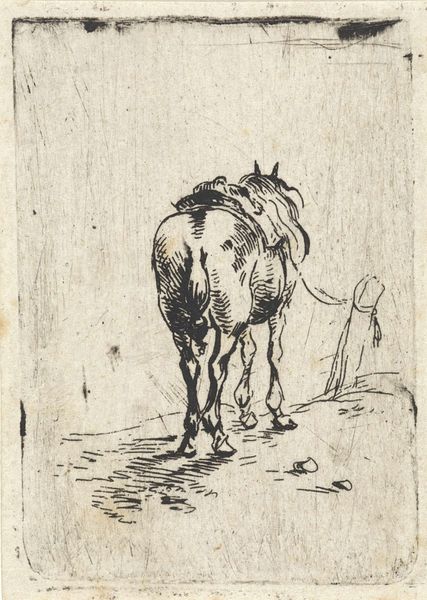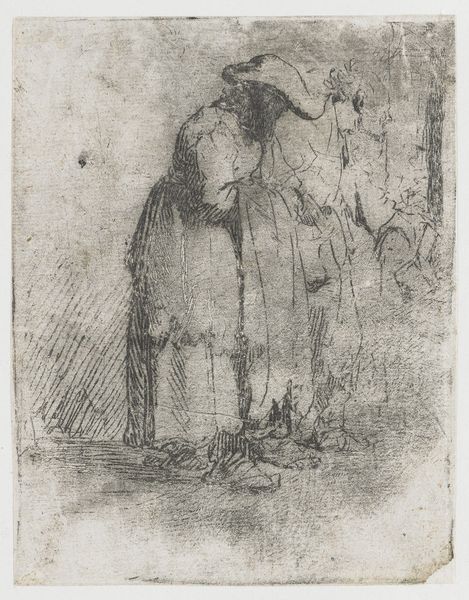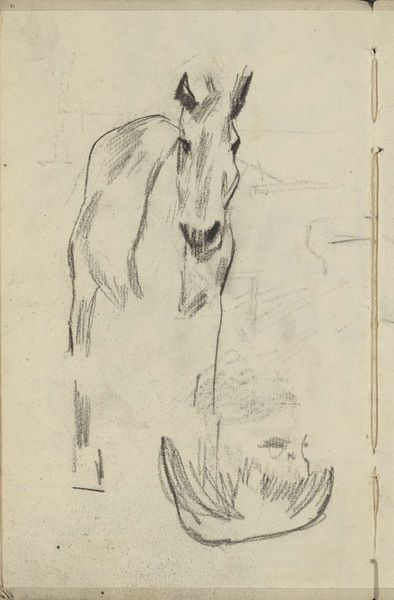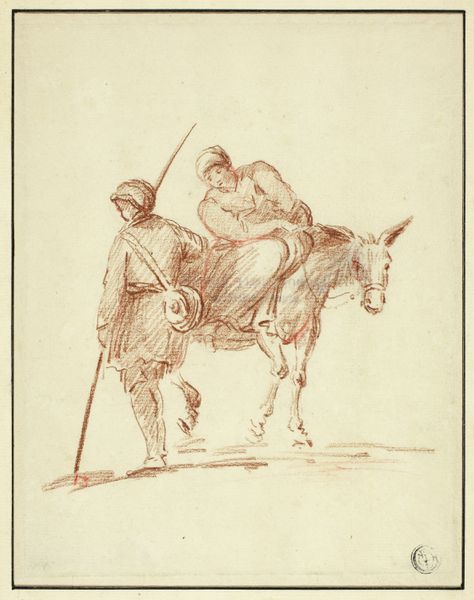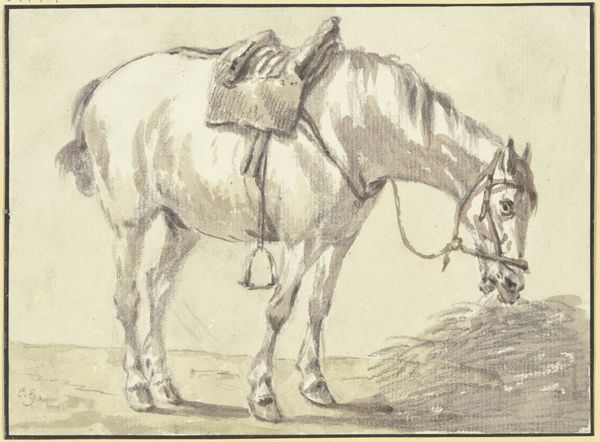
drawing, pencil
#
drawing
#
animal
#
dutch-golden-age
#
pencil sketch
#
landscape
#
figuration
#
pencil drawing
#
pencil
#
watercolor
#
realism
Dimensions: height 199 mm, width 158 mm
Copyright: Rijks Museum: Open Domain
Cornelis Saftleven made this drawing of a cow in the Netherlands sometime in the mid-17th century. In this period, the Dutch Republic experienced a boom in agricultural production and trade, transforming the nation’s culture. With new found wealth, Dutch citizens wanted art that reflected their daily life, and they developed a new taste for genre scenes, landscapes, and still lifes. Saftleven's image participates in that broader trend. Though it may appear simple, this image encodes important social and economic values. The cow was at the center of the Dutch agricultural economy, and images of cows celebrated the nation’s prosperity. They were symbols of national pride. As historians, we must consider this drawing in its own context to appreciate its meanings more fully. By considering the historical importance of agriculture and the development of a new culture, we can start to understand the important place of the humble cow in Dutch society.
Comments
No comments
Be the first to comment and join the conversation on the ultimate creative platform.

